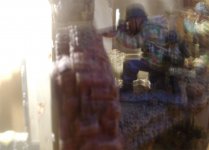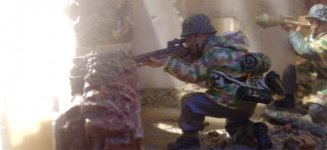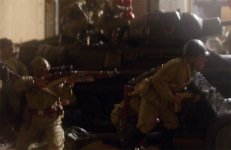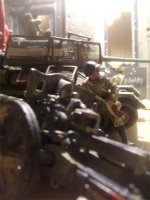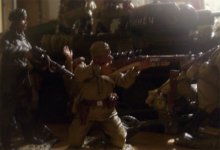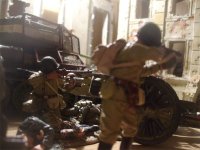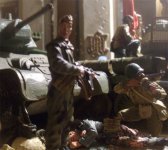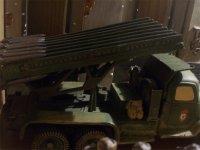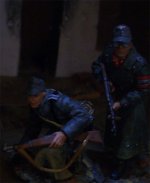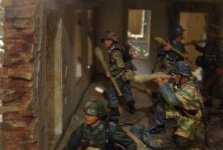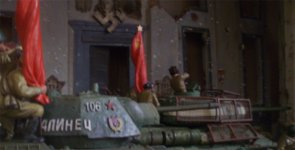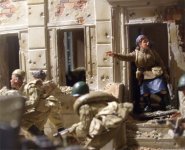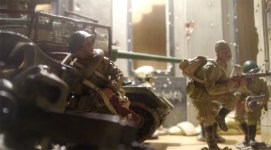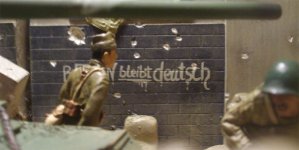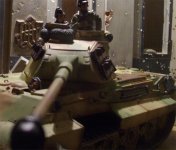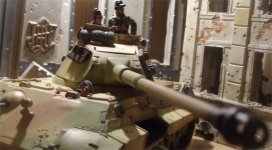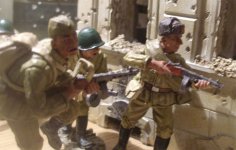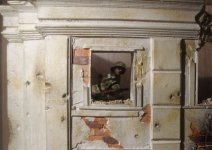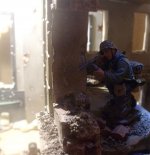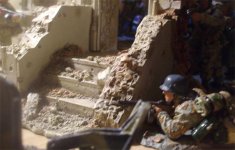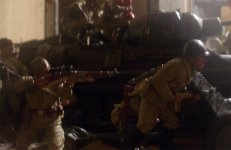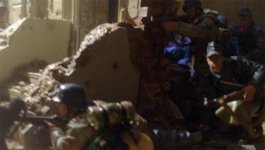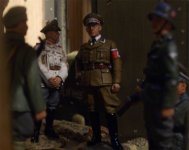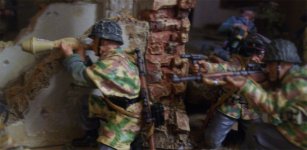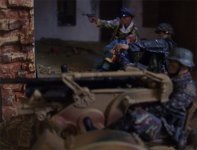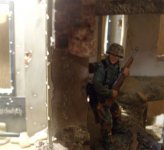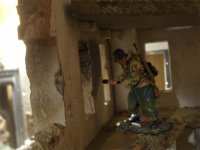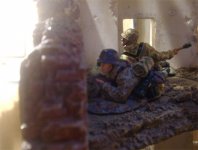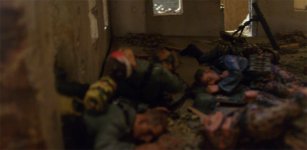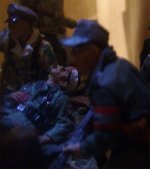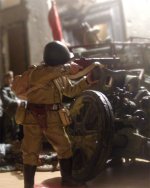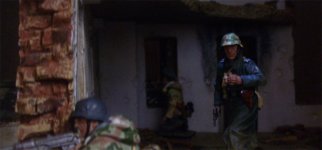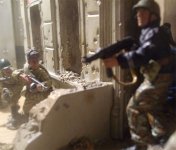redhugh
Master Sergeant
- Joined
- Oct 4, 2007
- Messages
- 1,348
On 9 April, after a long resistance Königsberg in East Prussia finally fell to the Red Army. Three Fronts converged on Berlin, from north, east and south.
The three Soviet Fronts had altogether 20 Armies, 2.5 million men (including 78,556 soldiers of the 1st Polish Army), 6,250 tanks, 7,500 aircraft, 41,600 artillery pieces and mortars, 3,255 truck-mounted Katyusha rocket launchers, and 95,383 motor vehicles.
Marshal Georgy Zhukov concentrated his 1st Belorussian Front into an area in front of the Seelow Heights. Marshal Rokossovsky's 2nd Belorussian Front moved into the positions being vacated by the 1st Belorussian Front north of the Seelow Heights. Marshal Konev shifted the main weight of the 1st Ukrainian Front to the Neisse River.
The final chapter in the destruction of Hitler's Third Reich began on April 16, 1945. The Battle of the Seelow Heights, fought over four days from 16 April until 19 April, was one of the last pitched battles of World War II, given that it required a commitment of almost one million Red Army troops and more than 20,000 tanks and artillery pieces were in action to break through the "Gates to Berlin" which was defended by about 100,000 German soldiers and 1,200 tanks and guns.
Dawn on 16 April 1945, on the Reitwein Spur. The whole 1st Belorussian Front was about to launch the last offensive of the European war against the Seelow Heights. Zhukov himself had come up to General Chuikov's command post, overlooking the misty Oder valley. In the darkness below them, there was the rattling of pots as men in the trenches were woken and given hot soup. The generals could smell the soup and hear the insect-buzz of field-telephones as each unit contacted its forward positions and artillery observers. A young woman named Margo served the commanders coffee. They climbed up to the camouflaged observation point at three minutes to five. At five o'clock, nine thousand guns and rocket-batteries opened fire.
The three Soviet Fronts had altogether 20 Armies, 2.5 million men (including 78,556 soldiers of the 1st Polish Army), 6,250 tanks, 7,500 aircraft, 41,600 artillery pieces and mortars, 3,255 truck-mounted Katyusha rocket launchers, and 95,383 motor vehicles.
Marshal Georgy Zhukov concentrated his 1st Belorussian Front into an area in front of the Seelow Heights. Marshal Rokossovsky's 2nd Belorussian Front moved into the positions being vacated by the 1st Belorussian Front north of the Seelow Heights. Marshal Konev shifted the main weight of the 1st Ukrainian Front to the Neisse River.
The final chapter in the destruction of Hitler's Third Reich began on April 16, 1945. The Battle of the Seelow Heights, fought over four days from 16 April until 19 April, was one of the last pitched battles of World War II, given that it required a commitment of almost one million Red Army troops and more than 20,000 tanks and artillery pieces were in action to break through the "Gates to Berlin" which was defended by about 100,000 German soldiers and 1,200 tanks and guns.
Dawn on 16 April 1945, on the Reitwein Spur. The whole 1st Belorussian Front was about to launch the last offensive of the European war against the Seelow Heights. Zhukov himself had come up to General Chuikov's command post, overlooking the misty Oder valley. In the darkness below them, there was the rattling of pots as men in the trenches were woken and given hot soup. The generals could smell the soup and hear the insect-buzz of field-telephones as each unit contacted its forward positions and artillery observers. A young woman named Margo served the commanders coffee. They climbed up to the camouflaged observation point at three minutes to five. At five o'clock, nine thousand guns and rocket-batteries opened fire.


